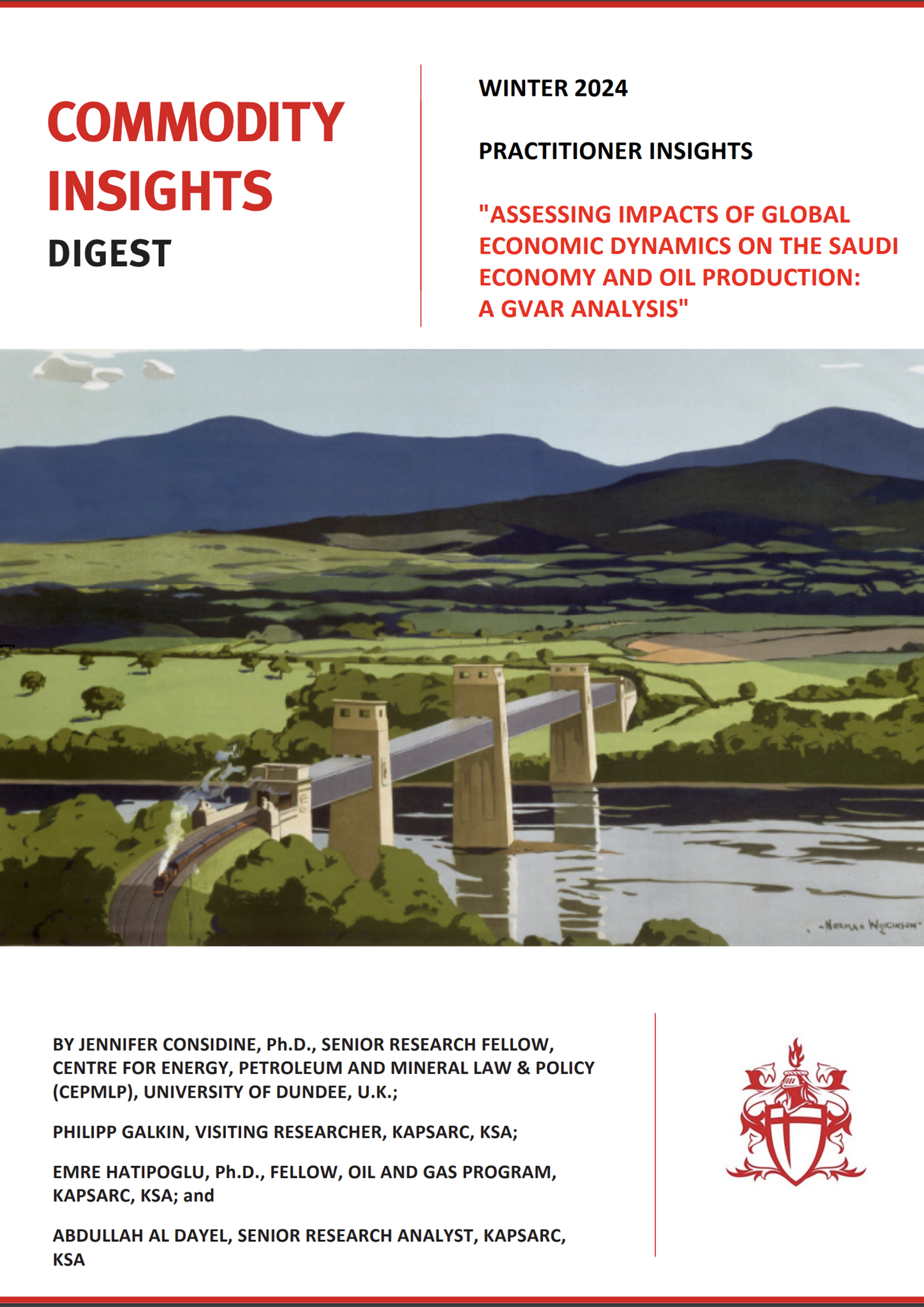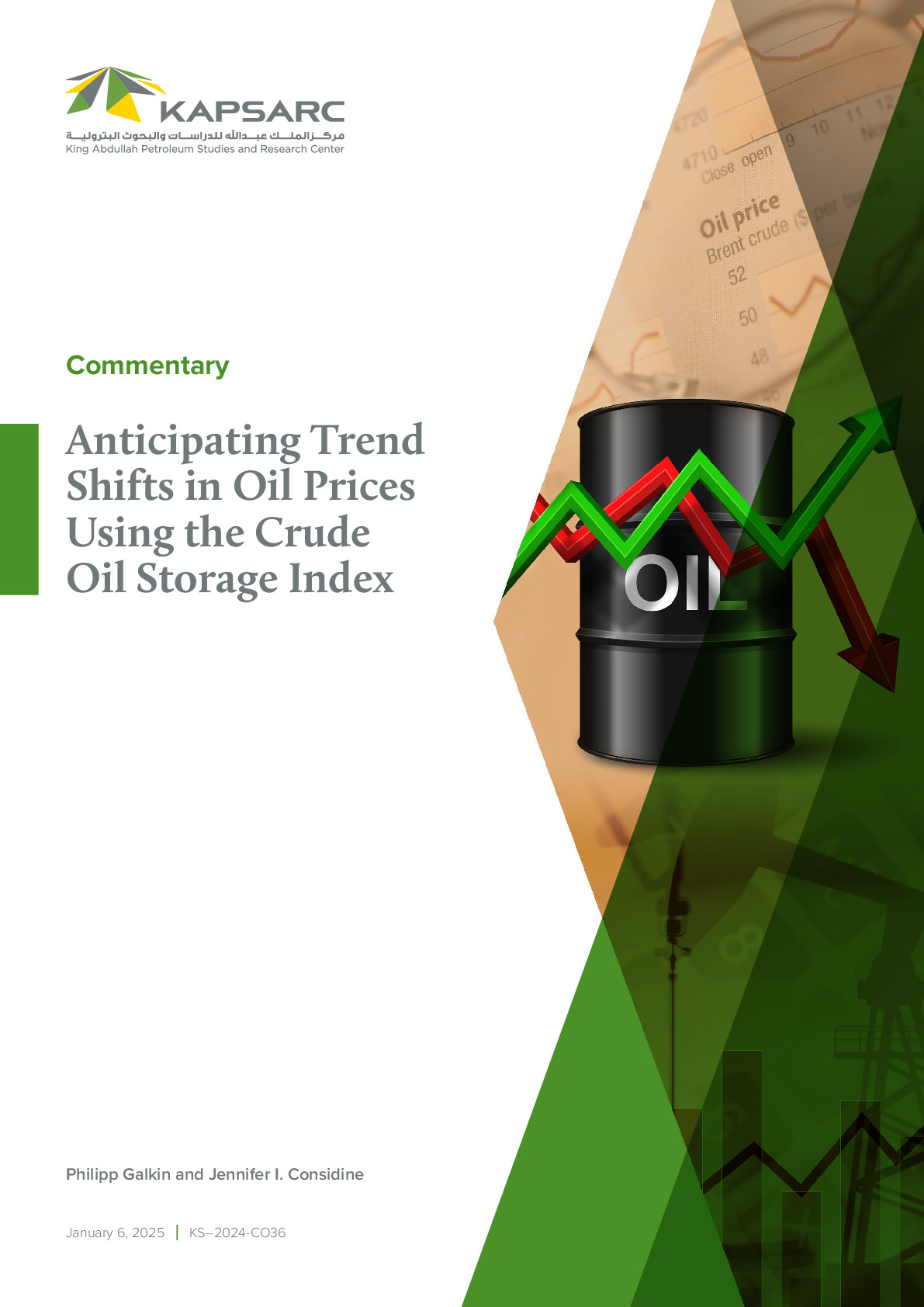The dynamics of crude oil prices have been characterized by a pronounced price trend, high-intensity jumps, and volatility. The price trend can be divided into three distinct categories: rising, falling, and “choppy sideways” or range bound in what is commonly known as a symmetrical triangle or pennant technical pattern . A change in the trend generally requires a change in the underlying market fundamentals, such as supply, demand, legislation, and geopolitical happenstance. Traders’ and market players’ expectations concerning these trends in the future are reflected in crude oil spread options prices, which can be used to forecast significant changes in the long-term movements of global oil prices.

Visiting Researcher- Oil & Gas
Philipp is a visiting researcher at KAPSARC, working on the economic and policy aspects of energy supply and trade. Philipp’s…
Philipp is a visiting researcher at KAPSARC, working on the economic and policy aspects of energy supply and trade. Philipp’s work at KAPSARC includes evaluating the effect of preferential trade agreements on energy flows, analysis of OPEC energy policy and deriving insights related to China’s energy policy and its impact on global markets through modeling energy supply sectors.
Expertise
- International economic relations
- Regional and country studies and policy analysis
Publications See all Philipp Galkin’s publications

Assessing Impacts of Global Economic Dynamics on the Saudi Economy and Oil Production: A GVAR Analysis
The dynamics of crude oil prices have been characterized by a pronounced price trend, high-intensity…
14th January 2025
Anticipating Trend Shifts in Oil Prices Using the Crude Oil Storage Index
The dynamics of crude oil prices have been characterized by a pronounced price trend, high-intensity…
7th January 2025
